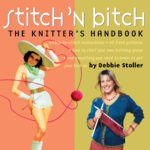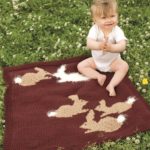Hello, busy knitters! If you’re interested in working from a pattern that specifies a kind of yarn you aren’t able to get ahold of, fear not—you don’t have to use that exact yarn, though you do want to pick one that’s similar. Consider the following factors when assessing a replacement to increase your chances of success.
Thickness. Look for a yarn with about the same number of yards per pound (or per ounce or 50 grams) as the original yarn. If you don’t know the yardage per weight of the original yarn, then match the recommended gauge. Purchase the new yarn based on total yardage needed for your project, not on weight or number of balls.
Fiber content. Stretchy yarns made from wool or wool blends can be substituted for each other. Wool yarns are more elastic and resilient than other fibers, making them your best bet for bulky sweaters, hats, mittens, and socks. Nonstretchy yarns made with other fibers can also be substituted for each other. Yarns that aren’t elastic, especially fine ones, are particularly suited to lace, making them perfect for scarves and shawls.
Structure. If you know the structure of the original yarn (for example, single, 4-ply, cabled), look for a similar yarn. If not, then consider whether the yarn will enhance any pattern stitch.
If you’re looking for a project, check out these cozy crocheted mittens, this beautiful knit Christmas stocking, and this adorable toy penguin.
![]()
For more tips like this, check out The Knitting Answer Book by Margaret Radcliffe—just $2.99 for the holidays!
Get the Book: Amazon | B&N | ebooks.com | Google Play | iBooks | Kobo







No Comments